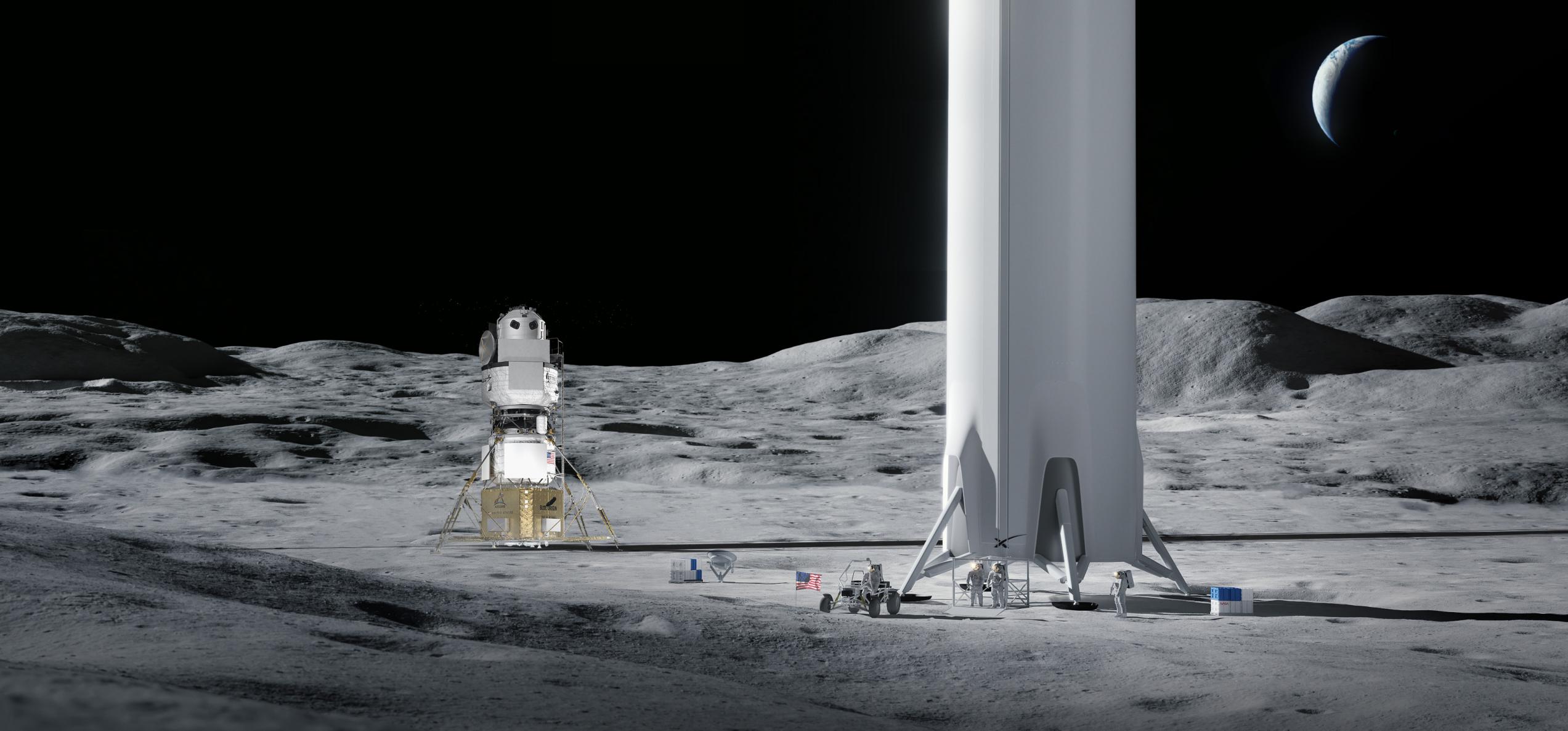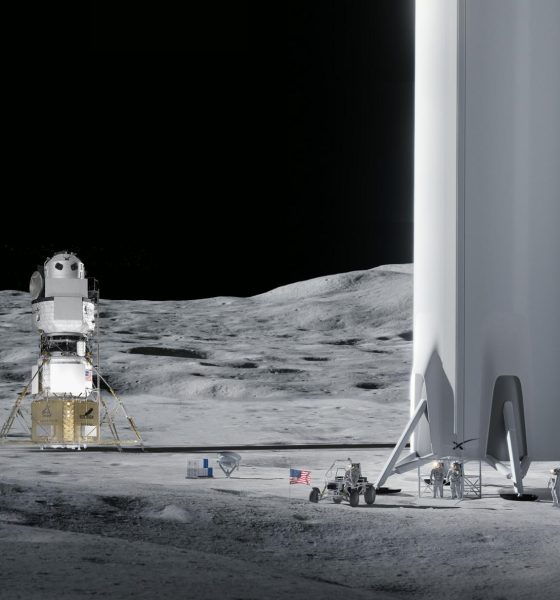

News
SpaceX CEO Elon Musk explains why Blue Origin’s Starship lawsuit makes no sense
For the first time since SpaceX competitor Blue Origin took NASA to federal court after losing a Moon lander contract to Starship and a protest over that loss, unsealed documents have finally revealed the argument Jeff Bezos’ space startup is focusing on in court.
After the details broke in new court documents filed on Wednesday, SpaceX CEO Elon Musk weighed in on Twitter to offer his take on why the arguments Blue Origin has hinged its lawsuit on make very little sense.
While one seemingly significant portion of the main complaint claiming to reveal “additional substantial errors” in SpaceX’s Starship HLS proposal was almost fully redacted, most of the opening argument is legible. In short, Blue Origin appears to have abandoned the vast majority of arguments it threw about prior to suing NASA and the US government and is now almost exclusively hinging its case on the claim that SpaceX violated NASA’s procurement process by failing to account for a specific kind of prelaunch review before every HLS-related Starship launch.
For NASA’s HLS competition, SpaceX proposed to create a custom variant of Starship capable of serving as a single-stage-to-orbit crewed Moon lander with the help of the rest of the Starship fleet – including Super Heavy boosters, cargo/tanker Starships, and a depot or storage ship. SpaceX would begin a Moon landing campaign by launching a (likely heavily modified) depot Starship into a stable Earth orbit. Anywhere from 8 to 14 Starship tanker missions – each carrying around 100-150 tons of propellant – would then gradually fill that depot ship over the course of no more than six or so months. Once filled, an HLS lander would launch to orbit, refill its tanks from the depot ship, and make its way to an eccentric lunar orbit to rendezvous with NASA’s Orion spacecraft and three Artemis astronauts.
As Blue Origin has exhaustively reminded anyone within earshot for the last five months, SpaceX’s Starship Moon lander proposal is extremely complex and NASA is taking an undeniable risk (of delays, not for astronauts) by choosing SpaceX. Nevertheless, NASA’s Kathy Lueders and a source evaluation panel made it abundantly clear in public selection statement that SpaceX’s proposal was by far the most competent, offering far a far superior management approach and technical risk no worse than Blue Origin’s far smaller, drastically less capable lander.
The bulk of Blue Origin’s argument appears to be that its National Team Lander proposal was drastically disadvantaged by the fact that SpaceX may or may not have incorrectly planned for just three ‘flight readiness reviews’ (FRRs) for each 16-launch HLS Starship mission. While heavily redacted, Blue Origin wants a judge to believe that contrary to the US Government Accountability Office’s (GAO) fair assessment that such a small issue is incredibly unlikely to have changed the competition’s outcome, it would have “been able to propose a substantially lower price” for its lander. To be clear, a flight readiness review is an admittedly important part of NASA’s safety culture, but it ultimately amounts to paperwork and doublechecks over the course of a day or two of meetings.
All else equal, the need to complete an FRR before a launch is incredibly unlikely to cause more than a few days of delays in a worst-case scenario and would have next to no cost impact. There is no reasonable way to argue that being allowed to complete some launches without an FRR would have singlehandedly allowed Blue Origin to “[engineer] and [propose] an entirely different architecture.” Nevertheless, that’s exactly what the company attempts to argue – that it would have radically and completely changed the design it spent more than half a billion dollars sketching out if it had only been able to skip a few reviews.
Curiously, Blue Origin nevertheless does make a few coherent and seemingly fact-based arguments in the document. Perhaps most notably, it claims that when NASA ultimately concluded that it didn’t have funds for even a single award (a known fact) and asked SpaceX – its first choice – to make slight contract modifications to make the financial side of things work, NASA consciously chose to waive the need for an FRR before every HLS Starship launch. Only via purported cost savings from those waived reviews, Blue Origin claims, was NASA able to afford SpaceX’s proposal – which, it’s worth noting, was more than twice as cheap as the next cheapest option (Blue Origin).
Ultimately, it thus appears that Blue Origin may have a case to make that NASA awarded SpaceX the HLS Option A contract despite a handful of errors that violated contracting rules and the HLS solicitation. Relative to just about any other possible issue, though, it’s hard not to perceive the problems Blue Origin may or may have correctly pointed out as anything more than marginal and extraordinarily unlikely to have changed the outcome in Blue’s favor had they been rectified before the award. Most importantly, even if Blue Origin’s argument is somehow received favorably and a judge orders NASA to overturn its SpaceX HLS award and reconsider all three proposals, it’s virtually inconceivable that even that best-case outcome would result in Blue Origin receiving a contract of any kind.

News
Tesla FSD fleet is nearing 7 billion total miles, including 2.5 billion city miles
As can be seen on Tesla’s official FSD webpage, vehicles equipped with the system have now navigated over 6.99 billion miles.

Tesla’s Full Self-Driving (Supervised) fleet is closing in on almost 7 billion total miles driven, as per data posted by the company on its official FSD webpage.
These figures hint at the massive scale of data fueling Tesla’s rapid FSD improvements, which have been quite notable as of late.
FSD mileage milestones
As can be seen on Tesla’s official FSD webpage, vehicles equipped with the system have now navigated over 6.99 billion miles. Tesla owner and avid FSD tester Whole Mars Catalog also shared a screenshot indicating that from the nearly 7 billion miles traveled by the FSD fleet, more than 2.5 billion miles were driven inside cities.
City miles are particularly valuable for complex urban scenarios like unprotected turns, pedestrian interactions, and traffic lights. This is also the difference-maker for FSD, as only complex solutions, such as Waymo’s self-driving taxis, operate similarly on inner-city streets. And even then, incidents such as the San Francisco blackouts have proven challenging for sensor-rich vehicles like Waymos.
Tesla’s data edge
Tesla has a number of advantages in the autonomous vehicle sector, one of which is the size of its fleet and the number of vehicles training FSD on real-world roads. Tesla’s nearly 7 billion FSD miles then allow the company to roll out updates that make its vehicles behave like they are being driven by experienced drivers, even if they are operating on their own.
So notable are Tesla’s improvements to FSD that NVIDIA Director of Robotics Jim Fan, after experiencing FSD v14, noted that the system is the first AI that passes what he described as a “Physical Turing Test.”
“Despite knowing exactly how robot learning works, I still find it magical watching the steering wheel turn by itself. First it feels surreal, next it becomes routine. Then, like the smartphone, taking it away actively hurts. This is how humanity gets rewired and glued to god-like technologies,” Fan wrote in a post on X.
News
Tesla starts showing how FSD will change lives in Europe
Local officials tested the system on narrow country roads and were impressed by FSD’s smooth, human-like driving, with some calling the service a game-changer for everyday life in areas that are far from urban centers.

Tesla has launched Europe’s first public shuttle service using Full Self-Driving (Supervised) in the rural Eifelkreis Bitburg-Prüm region of Germany, demonstrating how the technology can restore independence and mobility for people who struggle with limited transport options.
Local officials tested the system on narrow country roads and were impressed by FSD’s smooth, human-like driving, with some calling the service a game-changer for everyday life in areas that are far from urban centers.
Officials see real impact on rural residents
Arzfeld Mayor Johannes Kuhl and District Administrator Andreas Kruppert personally tested the Tesla shuttle service. This allowed them to see just how well FSD navigated winding lanes and rural roads confidently. Kruppert said, “Autonomous driving sounds like science fiction to many, but we simply see here that it works totally well in rural regions too.” Kuhl, for his part, also noted that FSD “feels like a very experienced driver.”
The pilot complements the area’s “Citizen Bus” program, which provides on-demand rides for elderly residents who can no longer drive themselves. Tesla Europe shared a video of a demonstration of the service, highlighting how FSD gives people their freedom back, even in places where public transport is not as prevalent.
What the Ministry for Economic Affairs and Transport says
Rhineland-Palatinate’s Minister Daniela Schmitt supported the project, praising the collaboration that made this “first of its kind in Europe” possible. As per the ministry, the rural rollout for the service shows FSD’s potential beyond major cities, and it delivers tangible benefits like grocery runs, doctor visits, and social connections for isolated residents.
“Reliable and flexible mobility is especially vital in rural areas. With the launch of a shuttle service using self-driving vehicles (FSD supervised) by Tesla in the Eifelkreis Bitburg-Prüm, an innovative pilot project is now getting underway that complements local community bus services. It is the first project of its kind in Europe.
“The result is a real gain for rural mobility: greater accessibility, more flexibility and tangible benefits for everyday life. A strong signal for innovation, cooperation and future-oriented mobility beyond urban centers,” the ministry wrote in a LinkedIn post.
News
Tesla China quietly posts Robotaxi-related job listing
Tesla China is currently seeking a Low Voltage Electrical Engineer to work on circuit board design for the company’s autonomous vehicles.

Tesla has posted a new job listing in Shanghai explicitly tied to its Robotaxi program, fueling speculation that the company is preparing to launch its dedicated autonomous ride-hailing service in China.
As noted in the listing, Tesla China is currently seeking a Low Voltage Electrical Engineer to work on circuit board design for the company’s autonomous vehicles.
Robotaxi-specific role
The listing, which was shared on social media platform X by industry watcher @tslaming, suggested that Tesla China is looking to fill the role urgently. The job listing itself specifically mentions that the person hired for the role will be working on the Low Voltage Hardware team, which would design the circuit boards that would serve as the nervous system of the Robotaxi.
Key tasks for the role, as indicated in the job listing, include collaboration with PCB layout, firmware, mechanical, program management, and validation teams, among other responsibilities. The role is based in Shanghai.
China Robotaxi launch
China represents a massive potential market for robotaxis, with its dense urban centers and supportive policies in select cities. Tesla has limited permission to roll out FSD in the country, though despite this, its vehicles have been hailed as among the best in the market when it comes to autonomous features. So far, at least, it appears that China supports Tesla’s FSD and Robotaxi rollout.
This was hinted at in November, when Tesla brought the Cybercab to the 8th China International Import Expo (CIIE) in Shanghai, marking the first time that the autonomous two-seater was brought to the Asia-Pacific region. The vehicle, despite not having a release date in China, received a significant amount of interest among the event’s attendees.








